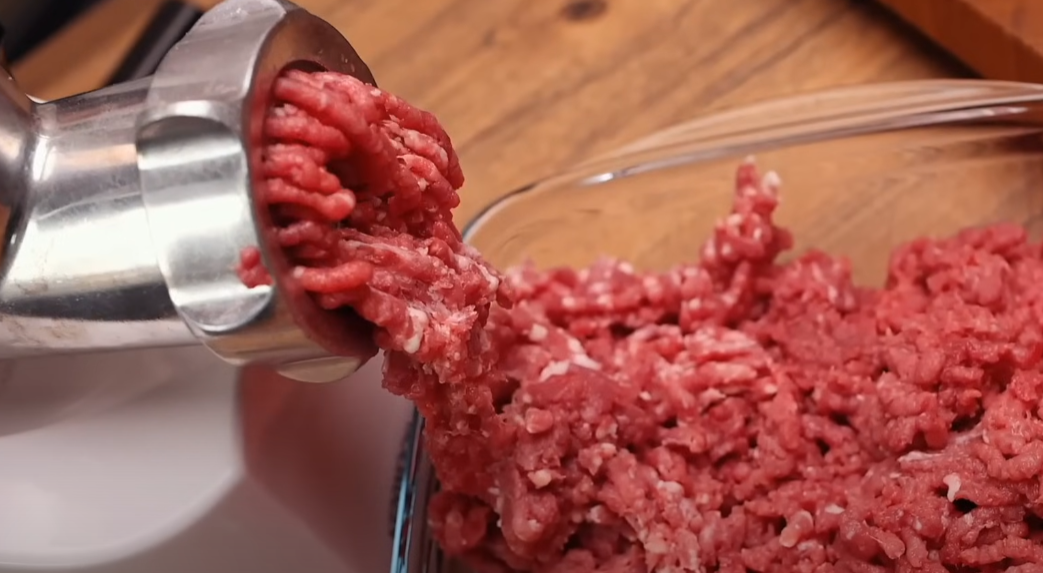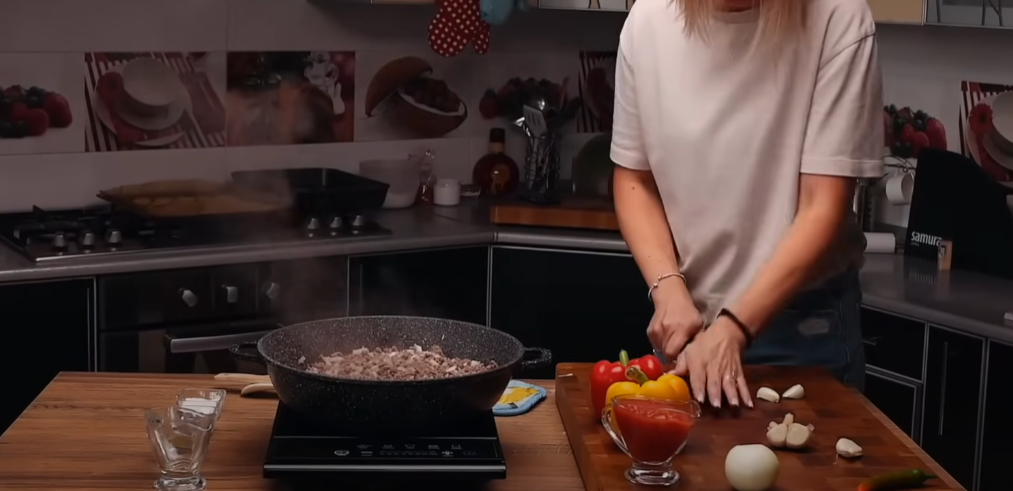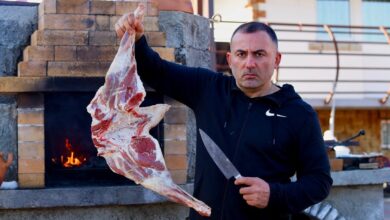MEAT CASSEROLE – GEORGY KAVKAZ

The Ultimate Meat Casserole: A Hearty Homestyle Masterpiece 🍲
Introduction: Rediscovering Comfort in Cooking
In our fast-paced world, few things evoke the warmth of nostalgia like a well‑crafted, homestyle meat casserole. Born from the marriage of simple ingredients and patient technique, this dish is a culinary heirloom: a treasure passed down generation to generation, intimately tied to communal tables, family get‑togethers, and the unscripted conversations that matter most. In this article, we’ll explore each layer—from selecting ingredients to finishing touches—so you can recreate this hearty casserole with the same spirited flair seen in the Georgy Kavkaz video.

Chapter 1: Ingredient Symphony – What You’ll Need
To craft the perfect meat casserole, gather quality ingredients that work together harmoniously:
1.1 Choice Cuts of Meat
- Primary Proteins: Georgy features a mix of tender meats; commonly, chicken thighs, beef brisket, and pork shoulder. This trio brings diverse textures and complementary flavors.
- Bone‑in vs. Boneless: Bones add depth to the broth, while boneless pieces expedite cooking—choose based on your preference.
1.2 A Foundation of Onions & Aromatics
- Onions: A staple, providing foundational sweetness and structure.
- Garlic, Carrots, Celery (Optional): For aromatic complexity and subtle sweetness.
1.3 Broth or Stock
- Choice of Liquid: Homemade chicken or beef stock is ideal. If using water, supplement with stock cubes or bouillon.
- Seasonings: Salt and pepper are essential; optionally, add bay leaves, thyme, or rosemary.
1.4 Complimentary Root Vegetables & Add‑Ins
- Potatoes: Classic in casseroles—Russets for fluffiness or Yukon Gold for creaminess.
- Others: Carrots, peas, mushrooms, bell peppers can round out the dish.
1.5 Final Layer: Cheese & Herbs
- Cheese: Gruyère, cheddar, or mozzarella create a luxuriant crust.
- Fresh Herbs: Parsley, thyme, or dill to enliven the flavor.
Chapter 2: The Art of Assembly & Prepping
2.1 Prepping the Meat
- Trim & Season: Clean excess fat, salt and pepper thoroughly.
- Cut to Uniformity: Evenly sized pieces ensure balanced cooking.
2.2 Searing for Flavor
- Hot Pan, Little Oil: Use heavy-bottomed skillet or Dutch oven—sear in batches to avoid overcrowding.
- Maillard Magic: Browning (2–3 minutes per side) intensifies flavor; deglaze pan with a splash of stock or wine for extra depth.
2.3 Vegetables & Aromatics
- In the same pan, sauté onions until soft (approx. 5 minutes), optionally adding garlic or carrots during the last 2–3 minutes to coax out their sweetness.
Chapter 3: Building Flavor Layer by Layer
3.1 Layer One: Meat & Onions
Arrange seared meat evenly in a baking dish or Dutch oven; scatter onions and aromatics around and between the pieces.
3.2 Layer Two: Vegetables
Add potatoes and root vegetables in a cohesive layer, ensuring they’ll cook evenly with the meat.
3.3 Layer Three: The Juicy Touch
Pour broth to reach about two-thirds up the sides—enough to keep everything moist without submerging. Add bay leaves and herbs now for infusion during cooking.
Chapter 4: Low & Slow – The Heart of the Casserole
4.1 Oven or Stovetop?
- Oven Method (325 °F / 160 °C): Ideal for even heat; bake for 2–3 hours, covered.
- Stovetop Simmering: Keep at gentle simmer on low, covered, for 2½–3 hours.
Check halfway; rotate dish if needed. Meat should be fork‑tender, vegetables cooked through, and liquid reduced into a glossy, flavorful gravy.
Chapter 5: The Grand Finale – Cheese & Broil
5.1 Uncovered & Cheese
Once cooked, uncover, taste and adjust seasoning. Evenly scatter grated cheese atop the casserole.
5.2 Broiling
Pop under a broiler (or increase oven to 425 °F / 220 °C) just until the cheese is golden, bubbling, and lightly crisped—2–3 minutes, watch carefully!
Chapter 6: Serving Suggestions
- Garnish with fresh chopped parsley or chives.
- Serve steaming, straight from the dish, over some crusty bread or alongside a crisp green salad.
- Accompany with pickled vegetables or chutney to balance richness.
Chapter 7: Variations & Customizations
7.1 Meat Swaps & Herb Tweaks
- Alternative Proteins: Lamb, duck, turkey, or sausage work beautifully.
- Herb Twists: Sage for a more savory tone, rosemary for piney depth, tarragon for hint of peppery sweetness.
7.2 Broth Boosts
A splash of wine, beer, or heavy cream added mid-way can deepen richness or lighten body.
7.3 Cheesy Layering Options
- Use cheese as topping only—or experiment layering cheeses between vegetables for internal meltiness.
Chapter 8: Behind the Scenes – Why It Works
- Searing builds flavor foundations through browning.
- Low‑temperature braise ensures tender texture and optimal flavor infusion.
- Cheese on top provides visual appeal, richness, and textural contrast.
- Broth soak allows thorough flavor distribution; reducing it converts into gravy.
Chapter 9: Common Pitfalls & Solutions
| Mistake | Issue | Fix |
|---|---|---|
| Overcrowding pan | Poor browning | Sear in batches |
| No deglazing | Lost fond & flavor | Splash liquid to lift browned bits |
| Thin broth | Dry casserole | Ensure proper liquid level |
| Timing skips | Soggy vegetables or tough meat | Monitor and rotate during cooking |
| Burned cheese layer | Bitter flavor | Watch broiler carefully; stop at golden top |
Chapter 10: Storing, Reheating & Freezing
- Fridge: Airtight for up to 4 days.
- Reheat: Oven at 325 °F covered; microwave on medium.
- Freeze: After cooking (before broiling), wrap and freeze up to 3 months. Thaw overnight in fridge, then broil.
Chapter 11: The Allure of Tradition
This casserole resonates because it connects us to tradition—the cooking methods of our forebears: simmering pots over open hearths, big communal meals, inventive use of seasonal produce. Each bite is a whisper of shared stories, collective effort, and culinary practices honed by time. It’s not just food—it’s history, comfort, and community in one dish.
Chapter 12: Your Turn – Cooking with Confidence
- Stick to low heat—slow is your friend.
- Taste often—start seasoning in early stages, adjust before cheese.
- Invest in key tools: heavy pot or rendering pan and dependable oven.
- Embrace leftover creativity: shovel into soups, stuff into pies, fold meat into tacos—versatility is your reward.
Conclusion: The Heartfelt Fullness of a Meat Casserole
The meat casserole is more than a recipe; it’s a testament to culinary wisdom distilled through generations. With a handful of quality ingredients, a few guiding principles, and some attentive technique, you can serve up not just food, but warmth, history, and satisfaction.
So embrace the process. Let the aromas fill your home. Gather loved ones around the table. Savor every bite, every bite a nod to tradition.
Here’s to good food, good company, and the soulful richness of a well-cooked meat casserole. Enjoy your culinary journey—and may each meal be a step closer to the shared joy of gathering again.







